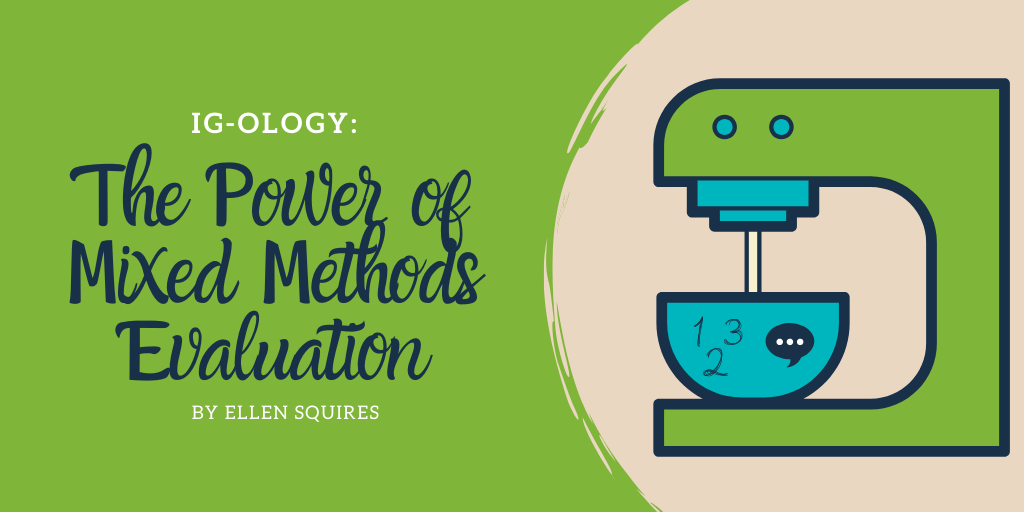
 Hello! I am Ellen Squires, a Senior Consultant at The Improve Group, and the focus of this month’s IG-ology is on the value of using both quantitative and qualitative data to amplify the impact of evaluation findings.
Hello! I am Ellen Squires, a Senior Consultant at The Improve Group, and the focus of this month’s IG-ology is on the value of using both quantitative and qualitative data to amplify the impact of evaluation findings.
I have always been a numbers person. I was the kid who would meticulously categorize and count my Halloween candy and make (admittedly primitive) graphs showing how many chocolate candies I received relative to the others. I’m still a numbers person. There’s something powerful about using quantitative data to tell stories, and in today’s data-driven world, numbers hold a lot of sway.
But there’s something that can make quantitative data even punchier. While I love telling stories with hard-hitting numbers, they’re made even richer and more meaningful when accompanied by qualitative data. In a previous position, I analyzed quantitative survey data from health facilities around the world and found that there were many places in the vaccine cold chain system where there were critical gaps. It was an important finding, but we couldn’t get to the root of the problem until we interviewed people working within the health system. With this qualitative data, we were able to co-create feasible solutions to help overcome some of the issues our quantitative research had uncovered. It was the first time I’d seen mixed methods in action, and I was hooked.
Recently at IG, I worked with a local public health department to conduct a Health Equity Data Analysis (HEDA), a method developed by the Center for Health Equity at the Minnesota Department of Health. The project started with something very familiar to me – secondary analysis of survey data to discover where there were disparities in health outcomes across the county. This revealed some important inequities! But through the HEDA process, we took it a step further. We conducted focus groups around the county and interviewed health care personnel to dive deeper into what might be driving some of the disparities we’d described quantitatively. The stories were powerful, and we came away with a much deeper understanding of what people were experiencing. In collaboration with other community partners, the local health department is using these findings to inform programming and engage stakeholders across the community.
Like we wrote about in a previous IG-ology, there are many considerations to take into account when selecting data collection methods. Where possible, I’m always excited to work with clients to figure out how we can use methods that are acceptable to the community served, and that hopefully marry numbers with qualitative data to help tell a richer and more impactful story.
